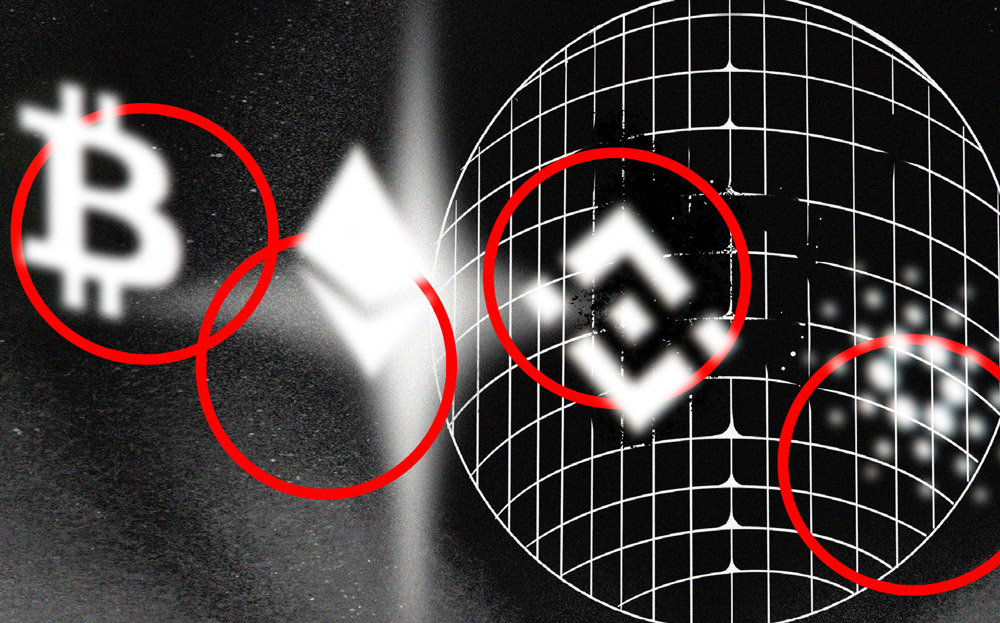Crypto Hedge Funds Deliver Bitcoin-Like Returns Without the Volatility
This content is from: Portfolio
A new MPI analysis shows that hedge funds have less downside risk — and that manager selection really matters.
June 15, 2022
Sponsored
Amid a choppy market, new data shows that hedge funds with crypto strategies offer less volatility than the crypto exchanges at large.
In an exclusive analysis for Institutional Investor, Markov Processes International concluded that that cryptocurrency hedge funds tend to perform on par with Bitcoin but with less downside risk. The analysis also found a large amount of dispersion between funds.
“These hedge funds add value, but you have to know what you’re doing,” said Michael Markov, chief executive officer at the eponymous firm. “There are firms out there with outstanding funds. Diversification helps too.”
The analysis is especially relevant following two down months for most currencies tracked by CoinMarketCap. This is par for the course for crypto investors, though.
“This type of volatility that we’ve experienced is not surprising,” said Joe Marenda, global head of digital assets investing at Cambridge Associates. “A drawdown of 50 percent in crypto is honestly expected.” What is new, though, are flashpoints like the Luna/Terra stablecoin blowup and the decision by crypto lender Celsius to freeze withdrawals earlier this week.
According to MPI’s analysis, the Eurekahedge Cryptocurrency Index tracks nearly in lockstep with Bitcoin. At first glance, this demonstrates that investing in a cryptocurrency hedge fund could result in similar returns to a single token — with higher fees.
But a deeper dive shows that there is a significant dispersion between the best and worst-performing funds, as well as other benefits to investors.
MPI used a dataset of 51 hedge funds — those with track records going back at least three years and included in either the Eurekahedge or HFR universe. The number is smaller than the total number of cryptocurrency hedge funds because MPI excluded newcomers and single-coin index funds.
Since 2018, the lowest dispersion between the best and worst-performing quartiles was 39 percent. The highest? Nearly 200 percent. The analysis noted that the dispersion between these funds is even higher than that of private equity firms.
MPI excluded the top five percent and bottom five percent of returners in this analysis to exclude outliers.
“The spread is really wide,” Markov said. “Just investing in average funds doesn’t mean anything. You see this crazy dispersion. It’s very important where you invest.”
According to Marenda, the wide performance dispersion makes the case for increased attention to manager analysis.
“Whenever you have this level of dispersion, that’s when you can generate outsize returns from doing good manager diligence and selection,” Marenda said. “In crypto, you have an absolute need to do really good manager diligence and selection.”
Marenda added that the latest crypto crash has revealed to investors that these funds take different approaches to risk management. “Some funds exited their position in Luna in December when they started to get a hint that the funds were not sustainable,” he said. “Other funds sold down a portion of their position in the first quarter; others rode it into the ground.”
To delve more deeply into risk and volatility, MPI created three equally weighted sample portfolios of ten hedge funds. The first was sorted by those with the most attractive Sortino ratio — a variation of the Sharpe ratio that only includes downside standard deviation — the second by total return, and the third by assets under management.
What the data showed is that during a three-year period starting in May 2019, those with the most attractive Sortino ratios slightly outperformed Bitcoin, at a significantly lower annualized semi-standard deviation. While the annualized semi-standard deviation for Bitcoin was about 37 percent annually, it was around 10 percent for the Sortino ratio portfolio, according to the data.
MPI used a Sortino ratio because it only wanted to measure downside risk — but Sharpe ratios matter here too.
“These are high Sharpe ratio opportunities,” Marenda said, estimating that for some of these funds, that ratio is two or three. The Sharpe ratio is measured by subtracting the risk-free rate (market beta) from a portfolio’s return, then dividing that by the standard deviation of the excess return. A Sharpe ratio of 0 means a portfolio has the same beta as the market at large.
Beyond these ratios, MPI’s sample portfolios revealed that even for the top ten returners and the ten largest funds, investing in a hedge fund structure would result in lower volatility than investing directly in Bitcoin. Even the HFR Blockchain Composite and the Eurekahedge Cryptocurrency indexes showed lower volatility.
“It’s just comforting,” Markov said. “It should provide some comfort to investors that it’s worth arbitrage, hedging, and diversifying in that space.”
This content is from: Portfolio
October 27, 2021
This content is from: Portfolio
November 10, 2021
Sponsored
June 15, 2022
Author
Administraroot


